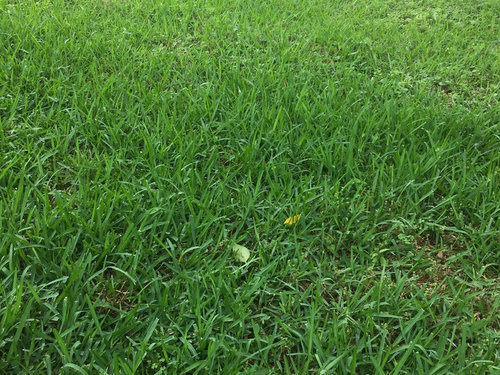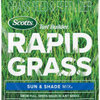Turning Weeds to St. Augustine
7 years ago
Related Stories

GARDENING GUIDES5 Weed-Smothering Ground Covers
Let these landscape plants do the dirty work of choking out weeds while you sit back and enjoy the view
Full Story
GARDENING GUIDESGreat Design Plant: Bugle Weed, a Quick Ground Cover
It’s highly adaptable, suppresses weeds, reduces erosion and provide weeks of bright flowers. Just watch for invasiveness
Full Story
GARDENING AND LANDSCAPINGWorld of Design: 10 Home Gardeners Show Us Their Sweet Summer Harvests
From New York to Tokyo, these gardeners have turned their yards, terraces and rooftops into places of bounty
Full Story
MOST POPULAR20 Outstanding Outdoor Living Rooms
Why give up style and comfort just because you add fresh air? Turn any porch or patio into a sumptuous room by following these leads
Full Story
GARDENING GUIDESGreat Garden Combo: 3 Wonderful Plants for a Deer-Resistant Screen
Protect your privacy and keep deer at bay with a planting trio that turns a problem garden area into a highlight
Full Story
EARTH DAYThe Case for Losing the Traditional Lawn
Work less, help the environment and foster connections by just saying no to typical turf
Full Story
SAVING WATERHouzz Call: Are You Letting Go of Your Lawn?
Many facing a drought are swapping turf for less thirsty plantings. If you’re one of them, we’d like to hear about it
Full Story
Houzz Call: Show Us Your Halloween-Themed Entryway
Fright fest or full of friendly ghosts, your decorated entryway could be featured on the Houzz homepage
Full Story
LANDSCAPE DESIGNGet Along With Less Lawn — Ideas to Save Water and Effort
Ditch the mower and lower your water bill while creating a feast for the eyes with diverse plantings and gathering places
Full Story
CURB APPEALThe Cure for Houzz Envy: Great Front Facade Touches to Borrow
Pull up to a better view and make visitors feel welcome by perking up your home’s face
Full StoryMore Discussions









DustinOriginal Author
Dan Mayer
Related Professionals
Fort Lee Landscape Architects & Landscape Designers · Glendora Landscape Architects & Landscape Designers · Redondo Beach Landscape Architects & Landscape Designers · Aurora Landscape Contractors · Stamford Landscape Contractors · Mesa Landscape Contractors · Munster Landscape Contractors · Vacaville Landscape Contractors · Vashon Landscape Contractors · Webster Groves Landscape Contractors · Bakersfield Swimming Pool Builders · Drexel Hill Swimming Pool Builders · Englewood Swimming Pool Builders · Los Alamitos Swimming Pool Builders · Redlands Swimming Pool Buildersdmt4641
dchall_san_antonio
DustinOriginal Author
dchall_san_antonio
M. Adams